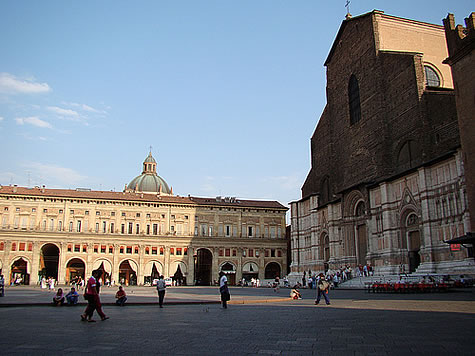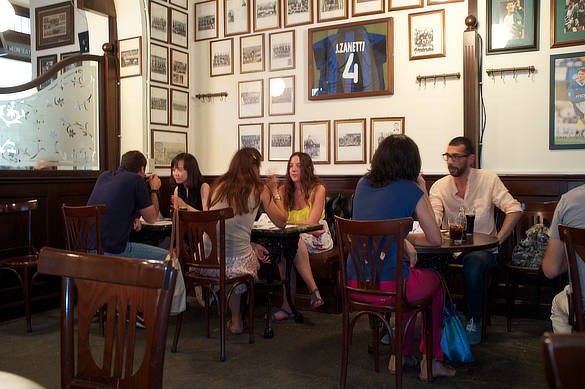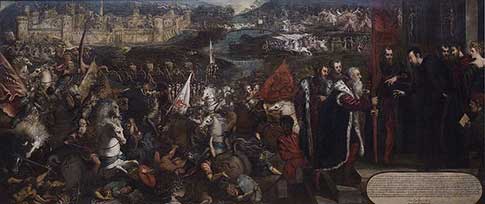Ancient Rome’s gladiators continue to captivate our imagination with their tales of bravery and spectacle. Unveiling the stories of these legendary fighters allows us to delve into the intriguing world of gladiatorial games and their cultural significance. Gladiators were skilled combatants who entertained crowds with their displays of strength, agility, and bravery within the grand arenas of ancient Rome.
The popularity of gladiatorial games in ancient Rome can be attributed to the thrill of combat, societal values, and political motivations. Understanding the various types of gladiators, such as the Secutors, Retiarii, Murmillones, Thraeces, Hoplomachi, and Bestiarii, gives us a glimpse into the diverse range of skills and weapons employed in these spectacles. However, life as a gladiator was far from glamorous.
They were subjected to grueling training, lived in harsh conditions, and faced daily challenges and routines that tested their physical and mental fortitude. The gladiatorial games, conducted in monumental arenas like the Colosseum, provided a platform for these fighters to showcase their skills in front of cheering crowds.
These games served multiple purposes, including entertainment, political propaganda, and a display of power by emperors and elites. Some gladiators gained fame and notoriety, such as Spartacus, Flamma, Commodus, and Carpophorus, leaving behind a lasting legacy in the annals of ancient Rome.
Beyond their immediate impact, the gladiatorial games shaped the image and mythology of ancient Rome, influencing art, literature, and popular culture. Furthermore, the influence of gladiatorial games can be traced through history, as they left a profound impact on later societies.
By exploring the stories of ancient Rome’s gladiators, we gain valuable insights into the spirit and complexity of this fascinating era.
Ancient Rome’s Gladiators: Unveiling Their Stories
Unveiling the Stories of Ancient Rome’s Gladiators provides a fascinating glimpse into their lives and experiences. Through historical accounts and archaeological discoveries, we can piece together their training, battles, and even their personal backgrounds.
One such story is that of Spartacus, a gladiator who led a major slave uprising against the Roman Republic in 73-71 B.C. His determination and leadership inspired thousands to revolt, challenging the power of the Roman Empire.
Uncovering the stories of ancient Rome’s gladiators not only highlights their courage and resilience but also sheds light on the complex dynamics of power and oppression in Roman society.
What Were Gladiators?
In ancient Rome, gladiators were skilled fighters who entertained audiences through deadly combat. These fighters, who were typically slaves or prisoners of war, underwent rigorous training to become proficient in various fighting styles. Gladiators showcased their skills in arenas like the famous Colosseum, where they performed in front of vast crowds.
There were different categories of gladiators, each characterized by their unique weapons and attire. Among them were heavily armored fighters known as Secutors, as well as Retiarii who fought with nets and tridents.
The gladiatorial games were immensely popular in ancient Rome because they had the power to captivate the masses and served as a form of entertainment, social control, and even propaganda.
Why Were Gladiatorial Games Popular in Ancient Rome?
Gladiatorial games were incredibly popular in ancient Rome due to a variety of reasons. One key factor behind their popularity was the entertainment value they provided to the spectators.
Watching gladiators battle each other or wild animals in grand arenas like the Colosseum was a thrilling and immersive experience for the Roman citizens. These games served as a means for emperors and politicians to gain favor and support from the masses, thereby answering the question of why gladiatorial games were popular in ancient Rome.
Additionally, the lavish spectacles showcased the empire’s power and wealth, further solidifying their control over the people. The games also had religious significance.
For instance, some events were dedicated to honor gods or celebrate significant events. This combination of entertainment, political manipulation, and religious importance contributed to the popularity of gladiatorial games in ancient Rome.
Types of Gladiators
Step into the fascinating world of Ancient Rome’s gladiators as we uncover the various types that once graced the arenas. Brace yourself for an exploration of fearless warriors such as the Secutors, Retiarii, Murmillos, Thraeces, Hoplomachus, and Bestiarii. From heavily armored fighters to nimble net-wielders, this diverse array of gladiatorial combatants will captivate your imagination and transport you to a time of fierce battles and legendary bravery. Get ready to dive deep into the captivating stories of Rome’s formidable gladiators.
Secutors
They were a type of gladiator in ancient Rome. They were known for their heavy armor and were typically armed with a short sword and a large rectangular shield. Secutors were often matched against retiarii, who specialized in using a net and a trident.
The armor of secutors provided them with protection, but it also limited their mobility. They relied on their strength and stamina to overpower their opponents.
The fights between secutors and retiarii were highly anticipated by spectators in the gladiatorial games. These battles were a display of skill and strategy, as the secutors aimed to get close enough to strike a fatal blow while avoiding the net of the retiarii.
Retiarii
The Retiarii were a type of gladiator in ancient Rome known for their distinct fighting style and weaponry. They were characterized by their use of a weighted net called the “rete” and a trident known as the “fuscina.” The Retiarii were often pitted against heavily armored opponents, such as the Murmillos or Secutors, relying on their agility and speed to outmaneuver their adversaries. This type of gladiator favored a more strategic approach, employing their net to immobilize their opponents before delivering a decisive blow. The Retiarii were popular among spectators for their thrilling and suspenseful battles.
Murmillos
Murmillos were a type of gladiator in ancient Rome, known for their distinctive armor and weapons. They were heavily armed and usually fought against other types of gladiators in the arena.
| Distinctive Features | Helmet with a visor and a crest |
| Armor | Large rectangular shield (scutum), arm and leg guards |
| Weapons | Gladius (short sword) and a rectangular or circular shield (parmula) |
| Fighting Style | They were trained in close combat and often engaged in battles with other heavily armored gladiators. |
Murmillos were popular among the spectators for their courage and skill in combat. They played an important role in the gladiatorial games, entertaining the crowds while risking their lives for fame and fortune. The legacy of murmillos continues to shape our understanding of ancient Rome and its gladiatorial culture.
Thraeces
Thraeces were a type of gladiator in ancient Rome known for their distinctive armor and weaponry. They were originally inspired by Thracian warriors from Thrace, a region in Southeastern Europe.
Thraeces were typically equipped with a small round shield, a curved dagger called a sica, and a plumed helmet. They were skilled in close combat and relied on agility and speed to outmaneuver their opponents. Thraeces were often pitted against other types of gladiators, such as murmillos or secutors, in the arena.
They played a significant role in the gladiatorial games and contributed to the rich history of ancient Rome’s gladiators.
Hoplomachus

Stop reading, start speaking
Stop translating in your head and start speaking Italian for real with the only audio course that prompt you to speak.
The hoplomachus was a revered type of gladiator in ancient Rome renowned for their distinctive armor and adept fighting technique.
They were fully equipped with a formidable round shield, a protective helmet, a lethal spear, and a well-honed short sword. Derived from the Greek term “hoplon,” meaning shield, the hoplomachus showcased their formidable skills in combat by engaging in battles against other gladiator types like the murmillo or the thraex, within the confines of the grand arena. Admired for their remarkable agility and combat prowess, these skilled warriors effectively utilized their shield and spear for both defense and calculated offensive maneuvers. The inclusion of hoplomachus fighters within the gladiatorial games served to highlight the diverse array of fighting styles and weaponry prevalent during ancient Rome’s era.
Bestiarii
| Bestiarii | Gladiators | Arena Battles | Fierce Animal Fights |
| Role | Trainers & Fighters | Entertain the Audience | Combat Various Animals |
| Fights | Against Other Gladiators or Animals | In Arenas across Ancient Rome | With Lions, Tigers, Elephants, etc. |
| Weapons | Various, Including Spears & Swords | Protective gear & Shields | None – Engaged in Hand-to-Claw Combat |
Fact: Bestiarii were highly trained gladiators who risked their lives battling fierce animals like lions and tigers in ancient Rome. It was a dangerous and thrilling spectacle for the audience, marking the popularity of animal fights in gladiatorial games.
The Life of a Gladiator
The life of a gladiator in ancient Rome was brutal and challenging. The Life of a Gladiator consisted of primarily trained slaves or prisoners of war, forced to fight for entertainment in front of a bloodthirsty crowd. Their training was intense and rigorous, involving combat skills and physical conditioning.
Gladiators lived in barracks and were constantly under watch. They faced the constant risk of injury or death in the arena, which was The Life of a Gladiator’s ultimate fate. Despite the harsh conditions, some gladiators achieved fame and even wealth through their victories.
The vast majority of gladiators lived short and difficult lives, their stories serving as a reminder of The Life of a Gladiator and the brutal nature of ancient Rome.
How Were Gladiators Trained?
Gladiators were extensively trained in various combat techniques to prepare them for the brutal gladiatorial games in Ancient Rome. The methods utilized to train gladiators were carefully designed to develop their strength, agility, and combat skills. How were gladiators trained, you may wonder? Their training regimen consisted of rigorous physical exercises and combat practice. They underwent training in diverse fighting styles, including sword fighting, hand-to-hand combat, and the mastery of specific weapons such as the trident and net. To enhance their skills, they engaged in sparring sessions with fellow gladiators and participated in simulated battles and combat drills. It is important to note that the gladiators’ training sessions were carefully supervised by experienced trainers known as lanistae. Furthermore, gladiators were not only instructed in combat techniques but also taught how to captivate the crowd and effectively showcase their combat prowess.
Living Conditions of Gladiators
The living conditions of gladiators in ancient Rome were incredibly harsh and presented numerous challenges. These warriors were typically housed in tight quarters known as ludi, which were overcrowded and unsanitary. In these cramped living spaces, gladiators had little privacy and were subjected to strict rules and regulations. Their diet primarily consisted of barley, grains, and beans, providing them with the necessary energy for their grueling training and performances. Enduring intense physical training, gladiators also often faced brutal fights within the arena. Despite these incredibly difficult conditions, gladiators rose to become esteemed figures in Roman society, with some even achieving fame and fortune.
A fascinating fact: It is worth noting that gladiators were not exclusively enslaved individuals or prisoners. In fact, some individuals willingly chose to enter the gladiatorial profession in order to pursue wealth and enhance their social status.
What Were the Challenges and Routines in the Life of a Gladiator?
The challenges and routines in the life of a gladiator were grueling and demanding. What Were the Challenges and Routines in the Life of a Gladiator? These individuals were subjected to intense physical training and had to constantly hone their combat skills. They faced the risk of injury and even death during gladiatorial games. Gladiators were typically owned by wealthy citizens or the state, and their lives were marked by strict discipline and regimented routines. They adhered to a strict diet and endured harsh living conditions, often living in barracks or prisons. The challenges they faced included constant battles, adapting to different fighting styles, and the pressure of entertaining the audience.
The Gladiatorial Games
The Gladiatorial Games were a significant aspect of ancient Rome’s culture and entertainment. These games took place in amphitheaters, with the Colosseum being the most renowned. Gladiators, who were typically slaves or prisoners, were skilled fighters that engaged in combat with each other or wild animals to entertain the audience. The highly anticipated Gladiatorial Games attracted large crowds and symbolized Rome’s power while maintaining social order. Furthermore, these games served as a means of entertainment, political propaganda, and a display of wealth and influence for the rich and powerful individuals.
Where Were Gladiatorial Games Conducted?
Gladiatorial games were conducted in various venues across Ancient Rome, including amphitheaters and circuses. The most famous and iconic venue was the Colosseum, which could hold up to 50,000 spectators. Other notable locations for gladiatorial games included the Circus Maximus and the Flavian Amphitheater. These games were grand spectacles and were held for public entertainment and to showcase the power and magnificence of the Roman Empire. The venues were carefully designed to accommodate large crowds and to provide optimal viewing for the audience. The games were an integral part of Roman culture and played a significant role in shaping society.
Where Were Gladiatorial Games Conducted?
Gladiatorial games were conducted in various venues across Ancient Rome, including amphitheaters and circuses. The most famous and iconic venue was the Colosseum, which could hold up to 50,000 spectators. Other notable locations for gladiatorial games included the Circus Maximus and the Flavian Amphitheater. These games were grand spectacles and were held for public entertainment and to showcase the power and magnificence of the Roman Empire. The venues were carefully designed to accommodate large crowds and to provide optimal viewing for the audience. The games were an integral part of Roman culture and played a significant role in shaping society.
What Was the Purpose and Structure of a Typical Gladiatorial Game?
A typical gladiatorial game in Ancient Rome served multiple purposes, including entertainment, political propaganda, and social control. The purpose and structure of a typical gladiatorial game revolved around showcasing the bravery, skill, and endurance of the gladiators while emphasizing the power and authority of the Roman Empire. The game consisted of different stages: the morning spectacles which featured exotic animals and executions, followed by the gladiator fights in the afternoon. These fights were divided into various rounds, with each round featuring different types of gladiators battling against each other.
Now, let me share a true story that showcases the brutal reality of gladiatorial games. In one instance, during a gladiatorial contest, a gladiator named Spartacus broke free from his captors, leading a rebellion against the Roman Empire and inspiring countless others to fight for their freedom.
Role of Gladiatorial Games in Ancient Roman Society
The gladiatorial games played a significant role in the ancient Roman society by serving as a form of entertainment. However, they also had deeper social and political implications. These games were utilized by emperors and politicians to both gain popularity and maintain control over the masses. The spectacle of the games not only showcased the power and might of Rome but also reinforced the hierarchical structure of society. Additionally, these games provided an outlet for social tensions and granted the lower classes the opportunity to experience moments of glory and fame. It is important to note that the games also perpetuated violence and brutality, reflecting the values of a society that greatly valued conquest and domination. Ultimately, the gladiatorial games played a complex role in shaping the image and mythology of ancient Rome.
Famous Gladiators of Ancient Rome
Step into the captivating world of Ancient Rome’s gladiators as we unveil the intriguing stories of its most famous combatants. Brace yourself for an epic journey through time as we delve into the lives and legends of warriors such as Spartacus, Flamma, Commodus, and Carpophorus. Discover the triumphs, tragedies, and extraordinary feats of these iconic gladiators who captivated the hearts and minds of the Roman Empire. Prepare to be amazed by their courage, skill, and indomitable spirit in the arena.
Spartacus
| Sub-topic | Spartacus |
| Who was Spartacus? | Spartacus was a gladiator and one of the most prominent leaders of the slave revolt against the Roman Republic in the first century BCE. |
| Background | Originally from Thrace, Spartacus was captured and sold into slavery. He became a gladiator, known for his skill and strength. |
| Leadership in the Slave Revolt | Spartacus led a large group of escaped slaves and gladiators in a revolt against the Roman Republic, winning several victories against Roman armies. |
| The Symbol of Freedom | Spartacus became a symbol of freedom and hope among the oppressed. His revolt inspired others to rise against their oppressors. |
| The End | The revolt ultimately failed, and Spartacus and his followers were defeated. Spartacus died in battle, but his legacy lived on. |
If you want to learn more about Ancient Rome’s gladiators, make sure to check out the other sections of the article. They provide in-depth information about the types of gladiators, their training, living conditions, and the impact of gladiatorial games on Roman society.
Understanding the stories of gladiators like Spartacus can give us valuable insights into the complexities of Ancient Rome and its historical significance.
Flamma
Flamma was a renowned gladiator in ancient Rome known for his exceptional skill and bravery. He fought as a secutor, wearing heavy armor and wielding a short sword and a large shield. Flamma achieved great success in the arena, winning over 30 battles and earning his freedom multiple times. He chose to remain a gladiator, driven by his love for combat. Flamma’s fame and reputation made him a beloved figure among the spectators. His story highlights the valor and dedication of gladiators in ancient Rome, and their enduring impact on the mythology and culture of the time.
Commodus
, Commodus, one of the most famous gladiators of Ancient Rome, was also the only Roman emperor to personally compete in the games. Born in 161 AD, he became known for his skill in the arena and his extravagant performances. Commodus often fought as a secutor or murmillo, wearing a distinctive lion-skin helmet. His reign marked a decline in the prestige of gladiators, as he transformed the games into spectacles of cruelty and excess. Eventually, Commodus was assassinated in 192 AD, bringing an end to his controversial and tumultuous rule.
Carpophorus
Carpophorus was a famous gladiator in ancient Rome known for his skill and strength. He specialized in fighting as a bestiarius, which involved battling wild animals in the arena. Carpophorus was particularly skilled in fighting against large and dangerous animals, such as bears, lions, and even bulls. He gained a reputation for his fearlessness and ability to defeat these formidable opponents. Carpophorus became a celebrated figure in gladiatorial games, captivating the audience with his daring and bravery. His performances contributed to the excitement and spectacle of the gladiatorial games, leaving a lasting impact on the history and legacy of ancient Rome’s gladiators.
The Legacy of Ancient Rome’s Gladiators
The legacy of Ancient Rome’s gladiators is still felt today in various aspects of our society. Their stories have captivated people for centuries, showcasing bravery, skill, and sacrifice. The influence of gladiators can be seen in modern forms of entertainment, such as sports and movies, where competition and spectacle take center stage. Their legacy extends to architecture, with structures like the Colosseum standing as a reminder of their existence. The perseverance and resilience of gladiators continue to inspire us, reminding us of the strength of the human spirit.
One particularly memorable story is that of Spartacus, a gladiator who led a slave revolt against the Roman Empire in 73 BC. Despite facing overwhelming odds, Spartacus and his followers fought for their freedom, displaying incredible bravery and determination. Their legacy lives on, symbolizing the power of unity and the fight against oppression. The story of Spartacus serves as a testament to the enduring impact that gladiators have had on our history and the lessons we can learn from their struggles.
How Did Gladiators Shape the Image and Mythology of Ancient Rome?
How Did Gladiators Shape the Image and Mythology of Ancient Rome?
The gladiators of Ancient Rome played a significant role in shaping the image and mythology of the empire. These skilled fighters, through their bravery and valor in the arena, became symbols of Roman power and military prowess. Gladiators became a source of entertainment and fascination for the Roman people, with their battles captivating audiences and serving as a reflection of the values and ideals of the society. The popularity of gladiatorial games also contributed to the glorification of violence and the warrior culture in Ancient Rome. The image of the gladiator as a hero and symbol of Roman might has endured through the centuries and continues to influence popular culture today.
Impact of Gladiatorial Games on Later Societies.
The impact of gladiatorial games on later societies is significant, influencing various aspects such as entertainment, sports, and cultural representation. Gladiatorial games left a lasting mark on the collective imagination, shaping the image and mythology of ancient Rome. The popularity and brutality of these games served as a foundation for future spectator sports. Gladiators also became iconic figures, recognized for their bravery and valor. The legacy of gladiatorial games can be seen in modern films, literature, and art, as well as in the development of combat sports like boxing and MMA. The influence of these games on later societies cannot be underestimated.


.jpg)



